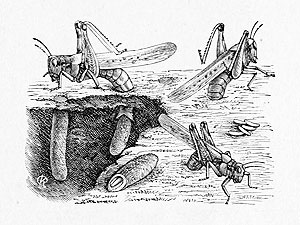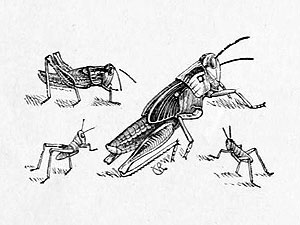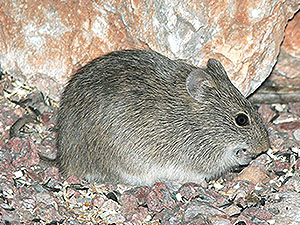Santa Cruz Pupfish (Cyprinodon arcuatus)
The Santa Cruz Pupfish, also known as Monkey Spring Pupfish, was endemic to the Santa Cruz River system in Santa Cruz County in Arizona, USA, where it apparently was restricted to the margins of an artifical pond fed by an irrigation canal from Monkey Spring.
The species reached a size of about 3,8 cm.
The Santa Cruz Pupfish disappeared around 1970, due to the introduction of Largemouth Basses (Micropterus salmoides (Lacépède)) for ‘sport’ fishing. The species was kept in captivity for some times but breeding efforts were unsuccessful so that the Santa Cruz Pupfish is now extinct.
*********************
edited: 27.05.2019
Tag Archives: Arizona
Astragalus endopterus (Barneby) Barneby
Sandbar Milkvetch (Astragalus endopterus)
The Sandbar Milkvetch is known exclusively from the type material that had been collected in 1947 near Cameron in Coconino County, Arizona, USA, where the plant grew a gravelly washes and sandbars of summer-dry streams at elevations of 1110-1200 m.
This species was never found again and is believed to be extinct.
*********************
edited: 19.09.2019
Heterelmis stephani Brown
Stephan’s Riffle Beetle (Heterelmis stephani)
Stephan’s Riffle Beetle was described in 1972; it was restricted to Madera Canyon on the western flank of the Santa Rita Mountains in south-east Arizona, USA.
The species was only ever found at two locations: Sylvester Spring and Bog Spring; in the last location it is known to have inhabited wet areas near a leaking pipe that diverted water from a spring to the Bog Spring Campground.
Stephan’s Riffle Beetle was last seen in 1993 and was officially declared extinct in 2016.
*********************

Depiction: United States Fish and Wildlife Service
(public domain)
*********************
edited: 23.08.2022
Melanoplus spretus (Walsh)
Rocky Mountain Locust (Melanoplus spretus)
The Rocky Mountain Locust inhabited a large range., including Alberta, Manitoba, and Saskatchewan in Canada and Arizona, Colorado, Iowa, Kansas, Minnesota, Montana, Nebraska, North Dakota, Texas, and Wyoming in the USA.
The full-grown adults reached lengths of about 3 cm.
***
The species formerly formed seasonally swarms of giant sizes, which then devastated large areas of North America, destroying countless crops, and causing famines.
It is said that the locust plague did not spared cotton clothing or leather when found, and it is furthermore claimed, that they may have even eaten wooden fencing posts.
These last assertions, however, are probably pure fantasy.
***
The last large swarms were recorded in the years between 1873 and 1877, the last specimens were finally collected in Manitoba, Canada in 1902.
The reasons for the extinction of this once so common species are not well known, but it has been argued that plowing and irrigation by settlers in the Great Plains disrupted their natural life cycle in the areas they lived in, so it is reported that farmers destroyed over 150 egg cases per square inch while plowing, harrowing or flooding. [1]
*********************
References:
[1] Jeffrey A. Lockwood: Locust: The Devastating Rise and Mysterious Disappearance of the Insect that Shaped the American Frontier. New York: Basic Books 2004
*********************



Depictions from: ‘Francis Huntington Snow: The more destructive grasshoppers of Kansas. University of Kansas Bulletin of the Department of Entomology (Topeka, KS: J. S. Parks, October 1897)’
(not in copyright)
*********************
edited: 13.03.2017
Sigmodon arizonae ssp. arizonae Mearns
Arizona Cotton Rat (Sigmodon arizonae ssp. arizonae)
The Arizona Cotton Rat was described in 1890, the species contains five subspecies of which one, the nominate race, is considered extinct.
The nominate race was endemic to the Mogollon Plateau, a pine-covered section of the large Colorado Plateau in east-central Arizona, USA, where it was last seen in 1932. It disappeared not at least due to predation by feral cats.
*********************

Photo: Alan Schmierer
(under creative commons license (1.0))
http://creativecommons.org/publicdomain/zero/1.0/deed.en
*********************
edited: 24.04.2019
